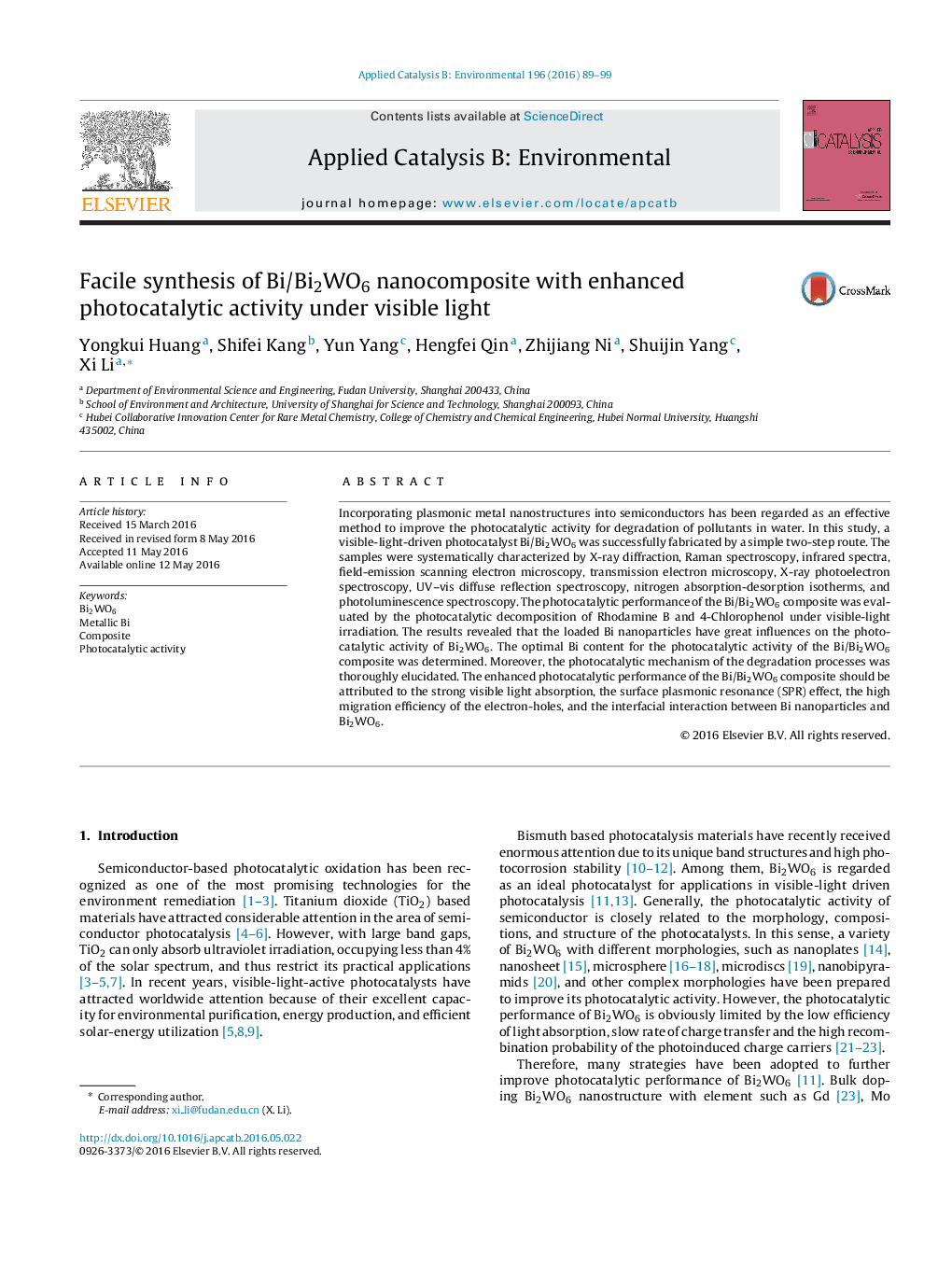| Article ID | Journal | Published Year | Pages | File Type |
|---|---|---|---|---|
| 44974 | Applied Catalysis B: Environmental | 2016 | 11 Pages |
•Bi nanoparticles were deposited on the surface of Bi2WO6 via a solvothermal method.•Metallic Bi nanoparticles showed surface plasmon resonance effect.•O2− and h+ were the main active species in the photocatalytic degradation.•The mechanism was proposed to explain the photocatalytic reaction.
Incorporating plasmonic metal nanostructures into semiconductors has been regarded as an effective method to improve the photocatalytic activity for degradation of pollutants in water. In this study, a visible-light-driven photocatalyst Bi/Bi2WO6 was successfully fabricated by a simple two-step route. The samples were systematically characterized by X-ray diffraction, Raman spectroscopy, infrared spectra, field-emission scanning electron microscopy, transmission electron microscopy, X-ray photoelectron spectroscopy, UV–vis diffuse reflection spectroscopy, nitrogen absorption-desorption isotherms, and photoluminescence spectroscopy. The photocatalytic performance of the Bi/Bi2WO6 composite was evaluated by the photocatalytic decomposition of Rhodamine B and 4-Chlorophenol under visible-light irradiation. The results revealed that the loaded Bi nanoparticles have great influences on the photocatalytic activity of Bi2WO6. The optimal Bi content for the photocatalytic activity of the Bi/Bi2WO6 composite was determined. Moreover, the photocatalytic mechanism of the degradation processes was thoroughly elucidated. The enhanced photocatalytic performance of the Bi/Bi2WO6 composite should be attributed to the strong visible light absorption, the surface plasmonic resonance (SPR) effect, the high migration efficiency of the electron-holes, and the interfacial interaction between Bi nanoparticles and Bi2WO6.
Graphical abstractFigure optionsDownload full-size imageDownload as PowerPoint slide
